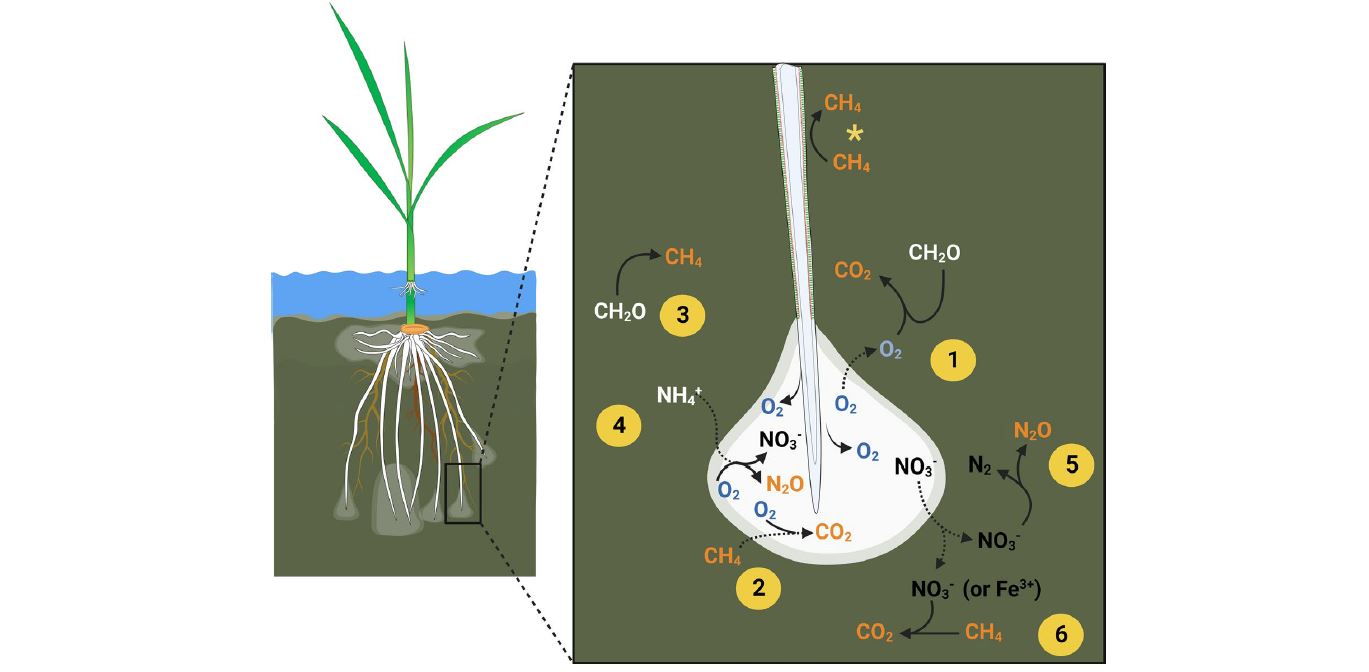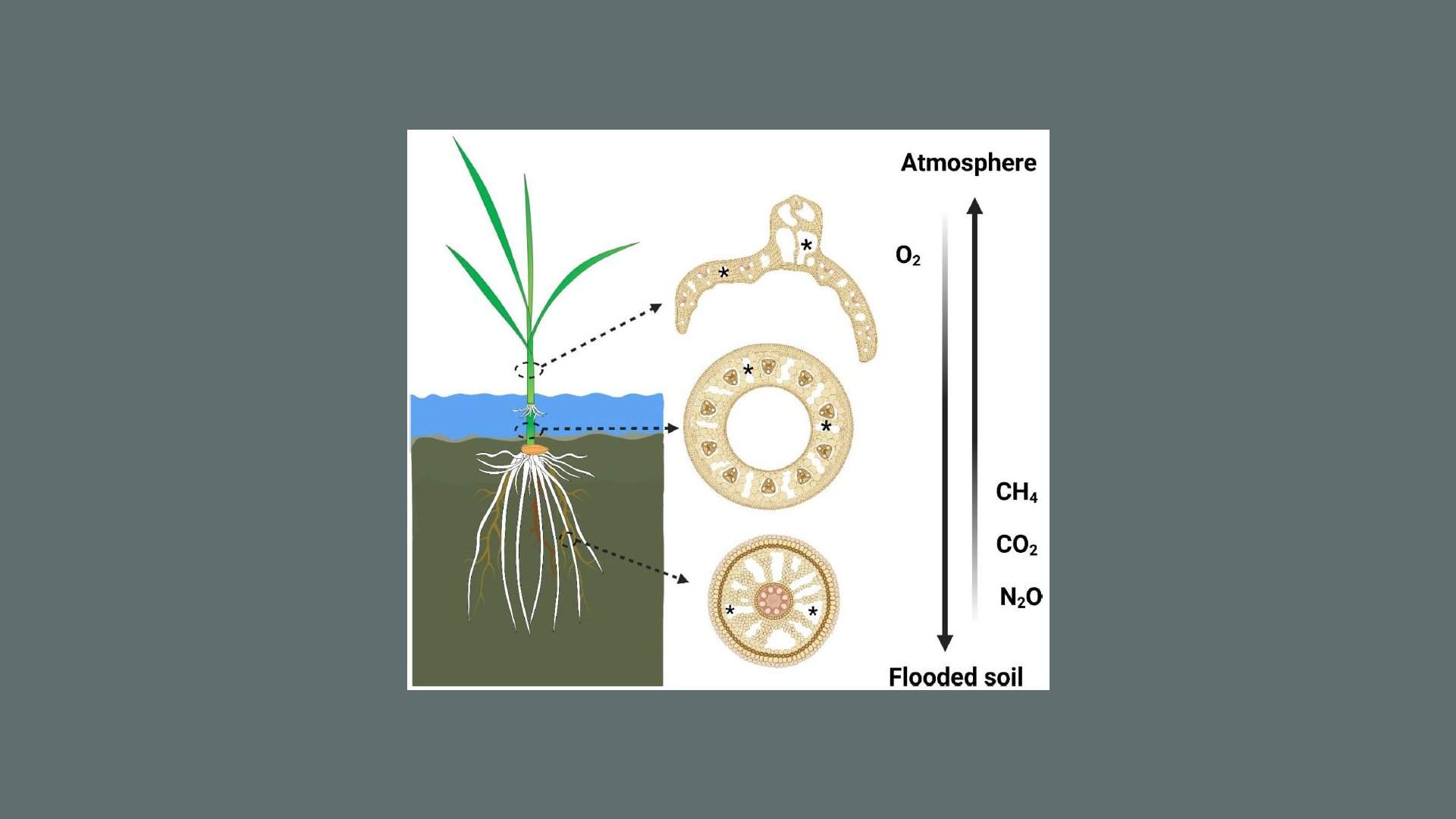New paper on mitigation of greenhouse gas emissions in paddy rice
Current approaches to reduce greenhouse gas emission from paddy rice primarily focus on changes in management practice. However, we propose to also focus on root traits as these can control production, conversion and subsequent fluxes of methane and nitrous oxide to the shoot, where these gases are vented to the atmosphere.
Considering the existent phenotypic variability in root traits of rice genotypes, we propose that the development of new rice cultivars exhibiting an effective internal O2 diffusion system, through enhanced aerenchyma formation and development of tight barriers to impede radial O2 loss along the basal parts of the roots will increase CH4 oxidation as well as promote nitrification, reducing the production of greenhouse gases and benefitting plant nutrient uptake.
Moreover, the development of roots with tight barriers to impede radial O2 loss, would also limit the radial diffusional entry of greenhouse gases into roots and further reduce the plant-mediated diffusion of these gases from paddy fields.
Check out our paper in RICE, which can be accessed from here.

Conceptual model showing how radial oxygen loss from root tips of rice drives various bio-geochemical reactions in the wet soil. The model also shows that the barrier to radial oxgyen loss present on the proximal part of the root prevents CH4 intrusion and thereby restricts the flux of CH4 to the shoot.
Considering the existent phenotypic variability in root traits of rice genotypes, we propose that the development of new rice cultivars exhibiting an effective internal O2 diffusion system, through enhanced aerenchyma formation and development of tight barriers to impede radial O2 loss along the basal parts of the roots will increase CH4 oxidation as well as promote nitrification, reducing the production of greenhouse gases and benefitting plant nutrient uptake.
Moreover, the development of roots with tight barriers to impede radial O2 loss, would also limit the radial diffusional entry of greenhouse gases into roots and further reduce the plant-mediated diffusion of these gases from paddy fields.
Check out our paper in RICE, which can be accessed from here.
Conceptual model showing how radial oxygen loss from root tips of rice drives various bio-geochemical reactions in the wet soil. The model also shows that the barrier to radial oxgyen loss present on the proximal part of the root prevents CH4 intrusion and thereby restricts the flux of CH4 to the shoot.

